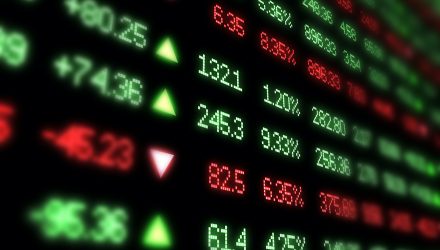Stocks and index ETFs traded in roughly the same range as the prior session, as investors counted on Friday’s jobs report to appraise the state of the labor market.
The Dow Jones Industrial Average rose 0.45%, breaking out to another fresh high, while the S&P 500 made a 0.25% climb. The Nasdaq Composite fell 0.2%.
Major stock ETFs are mixed on Thursday as well. The SPDR Dow Jones Industrial Average ETF (DIA) and SPDR S&P 500 ETF Trust (SPY) are both green, while the Invesco QQQ Trust (QQQ) is lower just after 12:15 PM EST.
After trending lower in the overnight futures sessions, the benchmark indices came alive after a better-than-expected jobless claims report. First-time claims for unemployment insurance totaled 498,000 for the week ended May 1, reaching a fresh pandemic-era low and beating the Dow Jones estimate of 527,000.
The big number most traders and analysts are waiting for however is April’s jobs report, which is set to be released on Friday. Economists polled by Dow Jones project a total of 978,000 payrolls to have been added last month, and the unemployment rate is anticipated to slip 0.2% to 5.8%.
“Today’s read is another proof point that we’re one step closer to full economic recovery, sooner than some may have expected,” said Mike Loewengart, managing director of investment strategy at E-Trade Financial. “As we see some serious momentum building on the jobs front, all eyes will be on how this plays into action taken by the Fed, if any.”
While some of the key benchmarks are moving higher, after suffering losses on Tuesday, the Nasdaq Composite recorded its fourth straight negative session on Wednesday, making this the benchmark’s longest daily losing streak since October.
“Technology sector earnings momentum relative to the broader market peaked in late May of 2020,” said Keith Lerner, chief market strategist at Truist. “Given that we expect the economy to grow well above trend this year and next, value stands to benefit. Indeed, when looking at the value indices, they are dominated by financials and tend to have greater exposure to economically-sensitive sectors that are more leveraged to an economic recovery.”
With the busiest week of earnings behind us, inflationary pressures and rising interest rates have also been on many investors’ minds. Fears of increasing prices for goods and services is something analysts are discussing more regularly.
“The question that matters the most is if asset managers will make a significant change in allocations to express an increased probability of a more persistent inflation,” Marko Kolanovic, JPMorgan global markets strategist, wrote in a note. “We think that this shift in allocation will happen (regardless of how temporary inflation is), and new data points related to inflation will on margin cause investors to shorten duration, move from low volatility to value, and increase allocations to direct inflation hedges such as commodities.”
“We expect this trend to persist during the reopening of global economies in the second half of this year,” he added. “Given the still high unemployment, and a decade of inflation undershoot, central banks will likely tolerate higher inflation and see it as temporary. Portfolio managers likely will not take chances and will reposition portfolios.”
Investors concerned about the effects of inflation, which has a clear and present effect on commodity prices such as lumber, can consider Invesco Optimum Yield Diversified Commodity ETF (PDBC), currently up 22% YTD. The fund provides a cross-section of 12 different commodities, all wrapped into one ETF.
For more market trends, visit ETF Trends.
